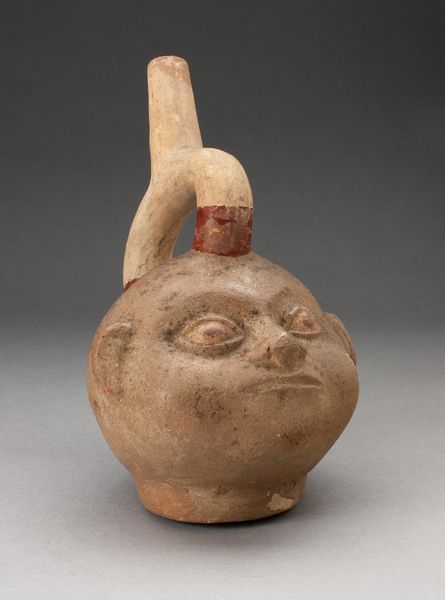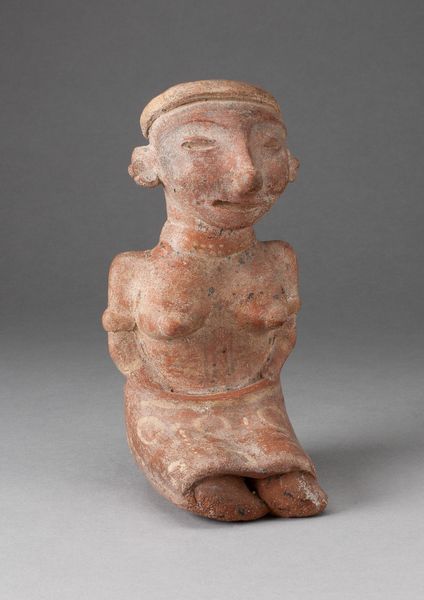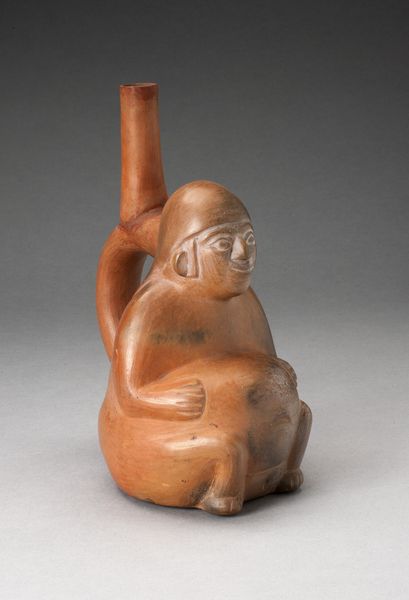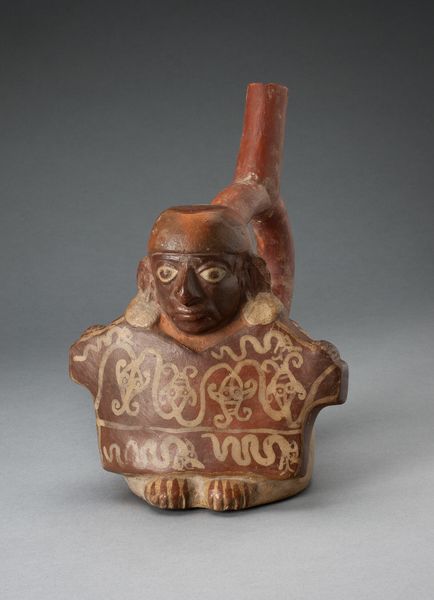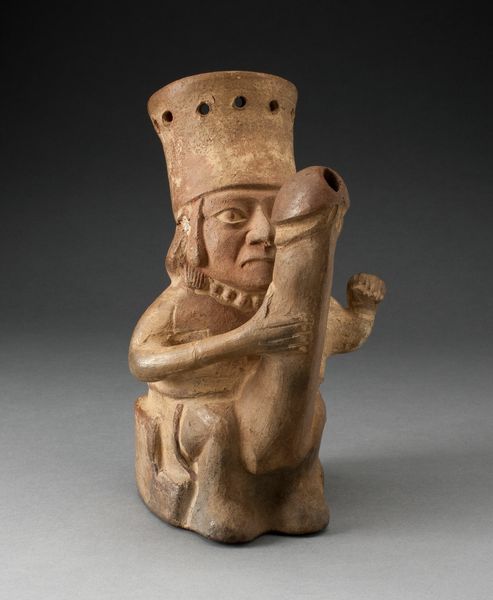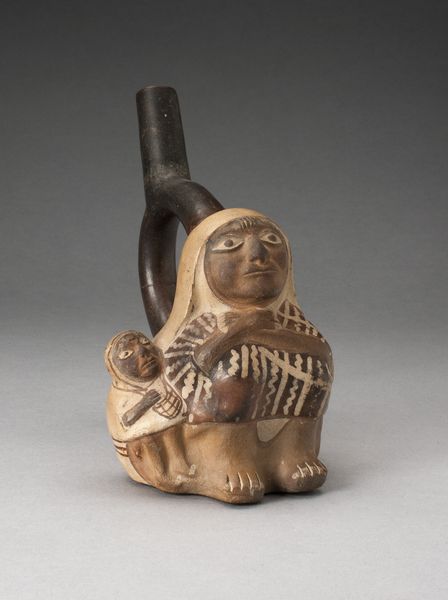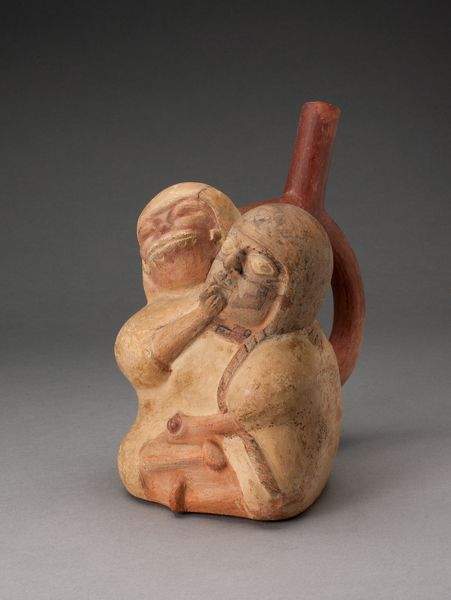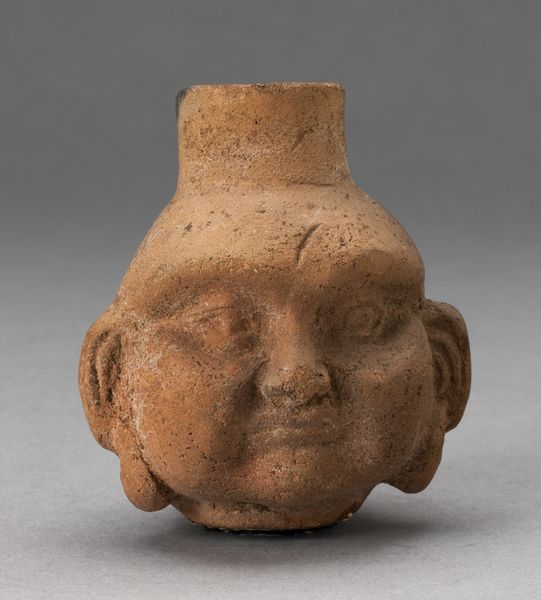
Handle Spout Vessel in the Form of Composite Human Heads with Physical Deformaties c. 100 - 500
0:00
0:00
ceramic, sculpture, terracotta
#
ceramic
#
figuration
#
sculpture
#
terracotta
#
indigenous-americas
Dimensions: H. 22 cm (8 5/8 in.)
Copyright: Public Domain
Curator: Here we have a Moche ceramic vessel from around 100 to 500 AD. The work, whose full title is "Handle Spout Vessel in the Form of Composite Human Heads with Physical Deformities," features two distinct faces rendered in a sculptural style. Editor: It's compelling. Immediately, I feel a sense of disquiet. The stark portrayal of facial differences invites questions about power, representation, and how Moche society regarded disability. Curator: Observe the precise articulation of form; notice the smooth, almost polished surfaces against the rougher, unworked areas. Semiotically, the two faces seem to suggest dual states—perhaps healthy/sick, life/death. The handle acts as a connector, an essential structural element joining two disparate halves. Editor: I’d suggest we expand on “duality." It may well allude to complex social stratifications. Consider, were those depicted honored, ostracized, or pathologized within their communities? Vessels like this offer profound insight into sociopolitical values of the Moche civilization, specifically their engagement with vulnerability and difference. Curator: Absolutely, though I maintain that we must begin with a thorough visual inventory—a careful cataloging of line, form, and spatial relationships to uncover meaning. For example, the artist contrasted smooth surfaces with intentionally rougher textures to call out each face uniquely, therefore isolating specific points. Editor: I concede to the power of visual elements as coded messaging. That is exactly how power is normalized or destabilized. These heads might represent more than individuals; it could be clan identity markers, ancestral links, or signifiers of divine authority or perhaps the absence of. It asks the viewer: whose stories were preserved, and how were those stories mediated via an ableist gaze? Curator: A fruitful discussion indeed! Ultimately, as art historians we find common ground as the formal elements blend seamlessly with sociopolitical context in order to create depth. Editor: Yes! And situating the vessel's artistry within intersectional frames yields rich dialogue about visibility, agency, and embodied experiences within pre-Columbian cultures.
Comments
No comments
Be the first to comment and join the conversation on the ultimate creative platform.


